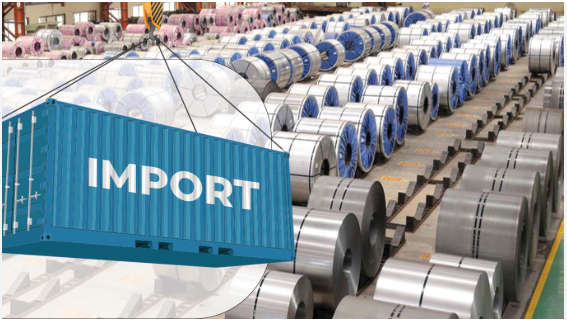Prime Minister Mark Carney announced stricter regulations on steel imports this week, a move aimed at shielding Canada’s domestic steel sector from “dumping” as international trade dynamics shift due to policy changes in the U.S. and China.
What is dumping?
Dumping occurs when foreign companies sell products at artificially low prices, either below production cost or for less than they charge in their home market. This is often done to gain market share abroad or to unload surplus stock from overproduction.
Government subsidies can play a major role in dumping by lowering production costs and distorting market prices. While subsidies are common globally—including in Canada—they can violate international trade rules if they lead to unfairly low export prices that undercut foreign markets.

Also Read: Stock Investment Canada for Beginners
How serious is steel dumping for Canada?
Canada’s steel industry has long argued that dumping poses a major threat. The share of offshore steel imports grew from 19% in 2014 to 39% in 2022.
Steel is also a frequent subject of anti-dumping investigations by the Canadian International Trade Tribunal, which often finds that such imports harm domestic producers.
There is growing concern that tighter U.S. import restrictions could push even more foreign steel—especially from China—into the Canadian market. Still, some experts argue the situation isn’t as dire as it may seem.
“There’s no clear evidence of a surge in imports right now,” said Dan Ciuriak, a trade policy expert and senior fellow at both CIGI and the C.D. Howe Institute. He believes that much of the steel trade is already distorted by protectionist measures, making the recent policy changes “overkill.”
“That’s all theatre as far as I’m concerned,” he said.
Despite current skepticism, there is longer-term concern about China’s growing steel overcapacity. Consulting firm Wood Mackenzie estimates China’s surplus could rise from 50 million tonnes today to 250 million tonnes in the next decade.
Ciuriak adds that global uncertainty—especially due to U.S. trade policy under former President Donald Trump—has stalled industrial investment, weakening demand. This has led domestic industries to push for tighter controls on imports, even though that won’t necessarily solve their underuse of capacity.
Also Read: Canadian Stocks to Buy 2025
Is this a new issue?
Not at all. Canada was the first country to introduce anti-dumping laws, dating back to 1904. The original policy imposed special duties to make up the gap between an item’s sale price and its fair market value.
As global trade has expanded, so have the challenges around dumping. China’s vast production capabilities and reports of excessive government support have added to the problem. In 2023, Chinese steel exports hit a record high of 115 million tonnes.
In 2020, United Steelworkers’ Canadian director Ken Neumann called for stronger action:
“Our union will continue to aggressively defend the jobs of steelworkers across Canada who for too long have been harmed by steel imports dumped into our country and sold at unprofitable, below-market prices.”
What’s the goal of the latest tariffs?
Canada already introduced 25% tariffs on Chinese steel and aluminum in October last year. However, the industry warned that Chinese steel was being rerouted—processed in third countries to bypass tariffs.
To close that loophole, the latest policy targets steel that was “melted and poured” in China, regardless of where it was finished or processed, ensuring that the 25% tariff still applies.
Sign Up For our Newsletters to get latest updates






